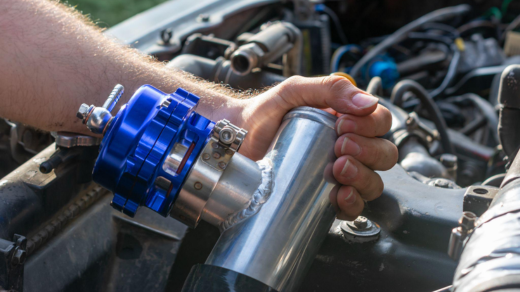Mitsubishi’s 4G63 and Beyond: The Evolution of Turbocharged Performance

The Rise of a Legend
Mitsubishi’s contribution to performance engine development often goes underappreciated, yet their innovations have profoundly influenced modern turbocharged engine design. The legendary 4G63 engine, along with other remarkable powerplants from Mitsubishi’s portfolio, demonstrates how thoughtful engineering can create engines that excel in both competition and daily driving. These engines have powered everything from rally champions to street performance icons, establishing Mitsubishi as a force in performance engine development.
The 4G63 engine emerged in the 1980s but truly gained prominence when turbocharged variants powered the Lancer Evolution series. This iron-block, aluminum-head design proved remarkably robust, handling power levels far exceeding factory specifications. The engine’s square bore and stroke configuration provided an ideal foundation for both high-revving naturally aspirated applications and torque-rich turbocharged builds. This versatility made the 4G63 a favorite among tuners worldwide.
Engineering Excellence
Understanding what makes the 4G63 special requires examining its engineering details. The use of a cast-iron block might seem outdated, but it provided strength and thermal stability crucial for turbocharged applications. Forged internals in Evolution models could handle extreme boost pressures, while the well-designed head flowed efficiently even at high rpm. These characteristics created an engine that rewarded careful tuning with impressive power gains while maintaining reliability.
Beyond the 4G63, Mitsubishi created numerous noteworthy engines. The 6G72 V6, particularly in twin-turbo form as found in the 3000GT VR-4, showcased advanced technology including four-wheel steering and active aerodynamics. The 4B11T in later Evolution models introduced aluminum block construction and MIVEC variable valve timing, demonstrating Mitsubishi’s continued innovation. Each engine reflected lessons learned from motorsport and real-world testing.
JDM Engine Specifications
For enthusiasts seeking authentic performance engines, imported JDM Mitsubishi engines provide access to specifications unavailable in other markets. Japanese domestic engines often featured unique components, different compression ratios, and tuning optimized for high-octane fuel. These engines offer excellent starting points for builds ranging from mild street cars to serious competition vehicles.
Mitsubishi’s involvement in World Rally Championship competition directly influenced their engine development. Technologies proven in the harsh environment of international rallying found their way into production engines. The Evolution series particularly benefited from this racing development, with each generation incorporating improvements derived from competition experience. This continuous refinement created engines that could withstand extreme conditions while delivering consistent performance.
Tuning Potential
The 4G63’s tuning potential became legendary in the performance community. Basic modifications like exhaust and boost increases yielded significant gains, while fully built engines could reliably produce power levels that seemed impossible from two liters. The strong aftermarket support meant parts availability remained excellent, from upgraded turbochargers to strengthened internals. This ecosystem enabled enthusiasts to build engines suited to any performance goal.
Mitsubishi’s approach to turbocharging differed from many manufacturers. Rather than viewing turbochargers merely as power adders, Mitsubishi integrated them as fundamental engine components. Sophisticated boost control, efficient intercooling, and carefully designed exhaust manifolds ensured responsive power delivery. The characteristic surge of turbocharged Mitsubishi engines became addictive to drivers who appreciated the combination of efficiency and performance.
MIVEC Technology
The MIVEC (Mitsubishi Innovative Valve timing Electronic Control) system represented another significant technological advancement. This variable valve timing technology improved both performance and efficiency, allowing engines to optimize valve timing for different operating conditions. When combined with turbocharging, MIVEC enabled broader powerbands and better fuel economy without sacrificing peak performance.
Maintenance of turbocharged Mitsubishi engines requires attention to specific areas. Quality oil becomes crucial, as turbochargers subject lubricants to extreme temperatures. Cooling system efficiency matters significantly, particularly in modified applications. However, when properly maintained, these engines routinely achieve high mileage. Many examples of 4G63 engines with over 200,000 miles continue performing admirably, testament to their fundamental durability.
Community and Support
The global Mitsubishi performance community provides invaluable resources for enthusiasts. Decades of collective experience with these engines has created comprehensive knowledge bases covering everything from basic maintenance to extreme modifications. This information sharing helps newcomers avoid common pitfalls while enabling experienced builders to push boundaries further. The community’s passion ensures these engines remain supported regardless of age.
Environmental considerations influenced later Mitsubishi engine development. Technologies like direct injection and improved combustion chamber designs reduced emissions while maintaining performance. The 4B11T engine in particular showcased how modern technology could improve upon classic designs, delivering better fuel economy and lower emissions without sacrificing the character enthusiasts loved.
Racing Applications
Racing applications continue showcasing Mitsubishi engine potential. From time attack competitions to drag racing, these engines prove themselves capable of competing at the highest levels. The knowledge gained from competition filters back to street applications, benefiting all enthusiasts. This racing connection maintains development momentum even as Mitsubishi’s focus has shifted away from traditional performance cars.
The influence of Mitsubishi engines extends beyond their original applications. Many enthusiasts transplant these engines into other vehicles, taking advantage of their compact size and impressive power potential. The 4G63 particularly has found homes in everything from rear-wheel-drive drift cars to all-wheel-drive rally builds. This versatility demonstrates the fundamental excellence of the engine design.
The Future and Legacy
Looking toward the future, while Mitsubishi has moved away from traditional performance cars, the legacy of their engines continues. The robust aftermarket ensures parts availability for years to come, while the knowledge base continues growing. Electric and hybrid technology may represent Mitsubishi’s future direction, but their gasoline performance engines have secured a permanent place in automotive history.
Conclusion
In conclusion, Mitsubishi engines like the legendary 4G63 represent engineering excellence that transcends corporate strategies or market trends. Through innovative design, motorsport development, and remarkable durability, these engines earned devoted followings worldwide. Whether building for street performance, competition, or simply maintaining a classic, Mitsubishi engines provide proven foundations backed by extensive knowledge and support. Their combination of robust construction, tuning potential, and racing pedigree ensures these remarkable powerplants will continue thrilling enthusiasts for generations to come.




